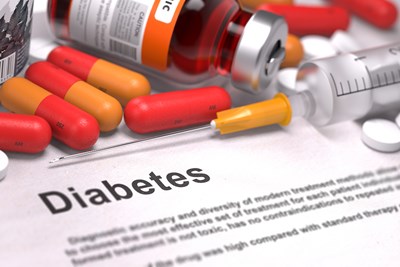Type 2 diabetes isn’t one of those things you can just forget about and hope goes away. In fact, as an autoimmune and metabolic disorder, it can have very serious effects on almost every system in your body.
Even with proper treatment and a healthy lifestyle, there are very serious complications that can arise because of this. However, with diligence, treatment, and vigilance, most of them can be at least postponed, if not put off altogether. Keep a close eye out for these complications.
Outside: The Skin and Nails
As an autoimmune disease, the immune system can get preoccupied elsewhere in the body, leaving some places more open to infection. Wounds may take longer to heal, and certain skin problems can be exacerbated. According to the American Diabetes Association (ADA), the most common bacterial skin infections among diabetics include styes in the eye, boils, carbuncles, and folliculitis (infections in the hair follicles often causing red, pus-filled bumps).
Fungal infections may also occur more easily, with candidiasis and ringworm being a prime examples. Athlete’s foot and nail infections are more common among diabetics too. In the extremities (like the toes), it’s more difficult for the immune system to find and fight infections, which makes it easier for microbes to take hold and get out of control.
Some people find that specific areas are just extremely itchy, especially on the legs where the blood doesn’t circulate as well. A variety of other skin conditions may result in scaly brown patches, red raised spots, blisters, or yellow bumps called eruptive xanthomatosis. If you have diabetes and notice any changes in the skin, or don’t know you have diabetes and begin noticing more frequent rashes or inflamed areas, contact a doctor immediately to discuss your options.
Inside: The Eyes, Ears, Nerves, and Cardiovascular System
Not only is hearing loss more common for diabetics, but people with diabetes also have significantly more trouble with eye problems than do others, making annual check ups extremely important. The ADA states that people with diabetes are 40% more likely to get glaucoma and 60% more likely to get cataracts. Retinopathy includes a range of problems with the retina that occurs in diabetics, including proliferative and nonproliferative retinopathy as well as macular edema, all of which involve trouble with the capillaries in the eyes.
Neuropathy is a type of damage that occurs specifically to the nerves, and it happens to about 50% of diabetics. Depending on the type and severity of the neuropathy, it may cause anything from tingling and pain (especially in the extremities) to total numbness and paralysis of the affected area. This is especially important because it occurs very often in the feet. Combined with poor wound healing and blood flow, serious complications can result.
Diabetes also puts considerable strain on the cardiovascular system, causing problems with the heart and blood vessels. Diabetic patients are more likely to have heart attacks, strokes, high blood pressure, and other cardiovascular diseases. This stress creates additional problems in other systems. The kidneys are more susceptible to disease or even failure.



